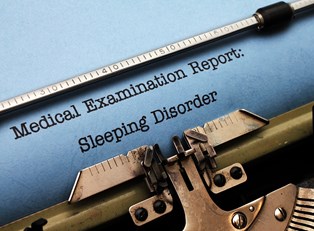Narcolepsy, a disorder characterized by falling suddenly into a deep sleep during any activity, requires extensive efforts on the part of both doctor and patient for an accurate diagnosis. While a family doctor may begin the process, a specialist is often required to step in.
Examination
The first step in diagnosing narcolepsy is a complete and thorough exam. The patient’s complete medical history must be reviewed from top to bottom. A physical exam and sometimes blood work are generally necessary to rule out other diseases or disorders that can cause similar symptoms. Any medication the patient is taking should be examined carefully for side effects or interactions that may be causing the sleep disruption. The patient may also be instructed to keep a journal for a few weeks, recording sleep time (both intended and unintended) and additional symptoms, such as hallucinations, feelings of weakness, and other unusual behavior.
Diagnostic Tests
A physical exam alone cannot diagnose narcolepsy, however. Specific narcolepsy tests must be used to ensure there is not an underlying issue causing the exhaustion. The patient reports to a sleep clinic, which houses the equipment needed to monitor all of the data required. The two tests most commonly used are the polysomnogram (PSG) and multiple sleep latency test (MSLT), each serving a different purpose.
- Polysomnogram: The PSG is the test most commonly thought of when someone says “sleep test” and is used for diagnosing multiple sleep disorders. The patient stays at the sleep clinic overnight, so that nighttime sleep pattern abnormalities can be observed. This experience is much like a stay in a hotel room, with the exception of being recorded by night vision cameras, watched by specialists, and hooked up to sensors. All of this is done to monitor heart rate, breathing patterns, brain waves, blood oxygen level, eye movement, noises (like snoring), and the position and movement of the body and limbs during sleep. These are then translated into graphs, which a doctor will examine and explain during a follow-up appointment.
- Multiple Sleep Latency: Based on the results of the PSG, the multiple sleep latency test may be necessary. While the PSG is intended for night time patterns, the MSLT is for excessive daytime sleepiness and is used almost exclusively for narcolepsy or idiopathic hypersomnia (a sleep disorder where only excessive daytime sleepiness is present). Over the course of an entire day spent at the sleep center, the patient is instructed to take carefully scheduled naps. Every two hours, the patient lays down and attempts to fall asleep, while technicians monitor how long it takes for the sleep to actually occur after darkness falls. If sleep does not occur within twenty minutes, the lights are turned back on for another two hours. If the patient does fall asleep, they are woken after fifteen minutes, during which time sensors monitor if sleep is actually occurring and which stages of sleep are entered into through heart and breathing rates and eye and body movement, similar to the PSG. Since immediate entrance to the rapid eye movement (REM) stage of sleep is characteristic of narcolepsy, if sensors show abnormal REM patterns, this is considered indicative of the condition.
Source Testing
Occasionally, a spinal tap (or lumbar puncture) may be necessary for a narcolepsy diagnosis. A long needle is inserted between vertebrae in the lower back to collect cerebrospinal fluid. Hypocretin is the chemical produced by the brain to promote wakefulness. Low levels of production are also suggestive of narcolepsy, and when present, this is considered to be the cause of the disorder. Unfortunately, very little is understood about other causes of narcolepsy, so no other tests are currently effective at pinpointing the cause.



